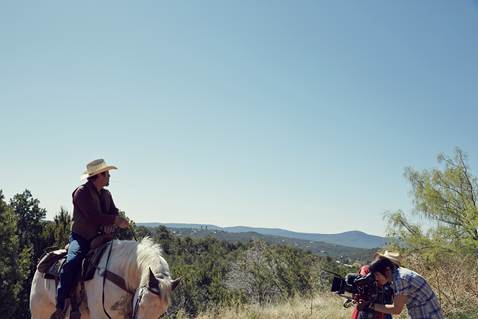Sony F5 Makes an Impact on New Disaster Scenario Doc
The new documentary Disaster Playground asks the question: What happens if and when an asteroid impacts the Earth? Before production began, filmmaker Catherine Goldschmidt asked the question, “what camera would best capture the look that she and the director wanted?”
Her answer was Sony’s F5 4K digital motion picture camera.
Disaster Playground, which premiered worldwide at the 2015 SXSW Film Festival, sets out to deconstruct Hollywood myths about asteroid-related events and what they really mean for our planet.
To make the content as accurate and realistic as possible, director Nelly Ben Hayoun and Goldschmidt traveled the U.S., speaking to scientists and experts at places like the NASA Ames research center in Silicon Valley, the Minor Planet Center in Cambridge, Mass, and even the disaster recovery and training center dubbed “Disaster City” in Texas.
“We wanted to film certain scenes and re-enactments as if they were staged, cinematic events, in spite of the fact that virtually everything in the film is un-rehearsed verité,” Goldschmidt said.
Disaster Playground is Hayoun’s second feature-length film, and her expertise is mostly in the art of creating and designing “experiences” for institutions like SETI (Search for Extraterrestrial Intelligence), NASA and also the tech company WeTransfer.
“She was just as interested in the nature of our interaction with the space scientists and experts we interviewed as she was in the final look of the film,” Goldschmidt said.
The professional video industry's #1 source for news, trends and product and tech information. Sign up below.
The team’s goal was to conduct all interviews in a very spontaneous way -- always handheld, in case the subject wanted to move around the room, demonstrate something or re-enact some event.
“Most of all, Nelly didn’t want the film to look like another traditional, talking-heads, stiff-TV-science doc,” Goldschmidt said. “She wanted to mix it up, be loose, inventive and seemingly invisible to the subject.”

Even with the film’s vision and look set in their heads, she knew the project was going to present some very specific cinematographic challenges, requiring a very specific type of camera. Goldschmidt chose the Sony F5 for its high-speed sensor and flexible Slog3 color space, and also because she knew she would need to shoot on a zoom lens that was small, light-weight, long-range and fast.
“I needed to be able to follow a scientist down a dim hallway, into a tiny office, and keep rolling for an hour or more, getting various cut-able angles without stopping the flow of the interaction,” she said. “And I knew I also wanted a lens that would have a certain filmic quality.” Goldschmidt added the F5’s handheld operation was smooth, describing it as “a very well-balanced, ergonomic camera.”
Goldschmidt previously shot an S16mm narrative feature exclusively on Canon S16mm zoom lenses, and since then loved the look and feel of those lenses in terms of image quality, speed and weight.
She also recently attended a class at Sony’s Digital Motion Picture Center in Culver City., Calif., led by Sony’s Keith Vidger and highlighting the unique S16 crop function of the F5’s sensor. After doing more research and working with Vidger, Goldschmidt decided that this would be the best way to use the older glass she loved on a fast and sensitive digital sensor that she trusted.
There wasn’t much time for testing before principal photography started but the team spent a day at San Francisco-based rental house Videofax looking at the image results from their camera tests, and also putting the F5 side-by-side with a Sony EX3 that camera operator Fiona Braillon brought with her from Belgium.
The EX3 was used as a secondary camera in Disaster Playground to film small, eccentric details in scientists’ offices, and to shoot in places where the crew wanted to stay well under-the-radar.
Videofax engineer Jim Rolin helped the team create a look profile within the EX3 to match the Slog3 as closely as possible.
“Because the 2K image was softened by the S16mm sensor crop, I was surprised at how similar the resolution of the two cameras looked,” Goldschmidt said. “I’m one of those old fashioned types, preferring the softer quality of film to crispy digital anyway, so I welcomed this fact and even exaggerated it occasionally by using diffusion filters.”
Once shooting was done and it was time to color grade the footage, the team was very pleased at their decision to shoot Slog3 in Cine EI mode because “it really did make our lives simpler,” Goldschmidt said.
“The finished film has definitive looks to distinguish between its various sections -- the interviews, the re-enactments, the ‘Americana’ parts,” she said. “I was able to create some of these different looks in-camera through lighting, but most of the time, because I didn’t have much control, we were effectively able to create these looks in post. The flexibility of the 4:2:2 2K XAVC codec was impressive, and overall I’m happy with the results.”
Following its premiere screenings at SXSW, the team will continue to screen the film for a range of audiences. For more information on the film and to view the trailer, visit the Disaster Playground website.
